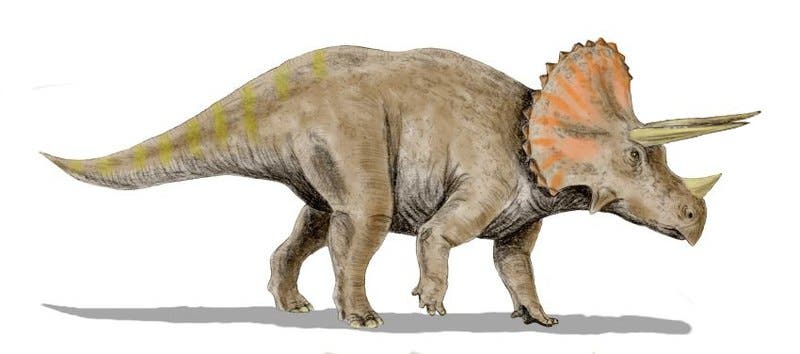A gargantuan Triceratops fossil was unearthed in Colorado. Paleontologists were thrilled to discover the 2,000-kilogram — 4,460-pound — giant at a construction site in Thornton.
Few dinosaurs stand as impressive as the armored Triceratops. Their tank-like appearance, the bony frill, and three horns make for an easily recognizable beast, and the mighty Triceratops is a star among dinosaurs. So it’s easy to understand why Joe Sertich, a Curator of Dinosaurs at the Denver Museum of Nature & Science, was so excited when he learned of the fossil.
“My heart was racing,” says DMNS Curator of Dinosaurs Joe Sertich. “I realized it was a pretty important dinosaur find.”
It’s a comprehensive find, a full or almost full skeleton. It was uncovered in a patch of loose sand, which facilitate excavation. At first, the finding was kept secret but then, a part of it was even live-streamed on Facebook.
“This is probably one of only three skulls of triceratops found along the Front Range area,” says Sertich.

Most findings in the area come from a completely geological era, from the Ice Age — just 10 to 12 thousand years ago. But the Triceratops fought the T-Rex some 66 million years ago, and that’s likely when it encountered the unhappy fate which preserved it so well for paleontologists to find.
“This dinosaur has been laying here for at least 66-million years,” says Sertich. “I’m over the moon right now about this dinosaur fossil.”
This finding also poses some intriguing questions. The Triceratops stood up to three meters tall (9.8 feet) and 9 meters long (29.5 feet), weighing up to 12 tonnes (26,000 pounds). But this one, like previous findings from the area, is much smaller, and we don’t really know why. Previous fossils haven’t yielded much information about that, but this one might help put things into perspective.
“We don’t really know why,” he added. “Even though we have hundreds of triceratops from the American West, we only have three good skulls. And this might be one of the best skeletons to tell us why Denver triceratops are smaller than all of their cousins everywhere else.”
Also, since the bones are at least partly disaggregated, paleontologists believe the Triceratops was hunted and killed by a Tyrannosaur, its bones left to decay. If this is indeed the case, it could also help better understand the relationship between the two iconic dinosaurs.
The fossil is not visible from the street, but officials are working to provide the necessary resources to facilitate not only the study, but also the display of the fossil. You can check out the project at www.gocot.net/dinosaur.






